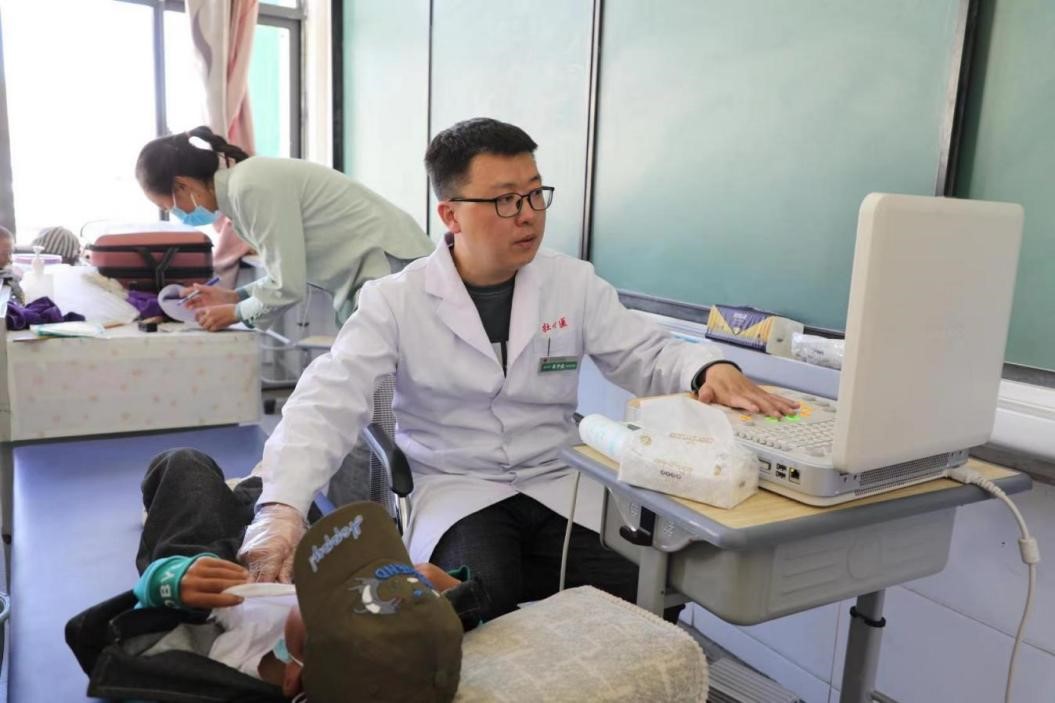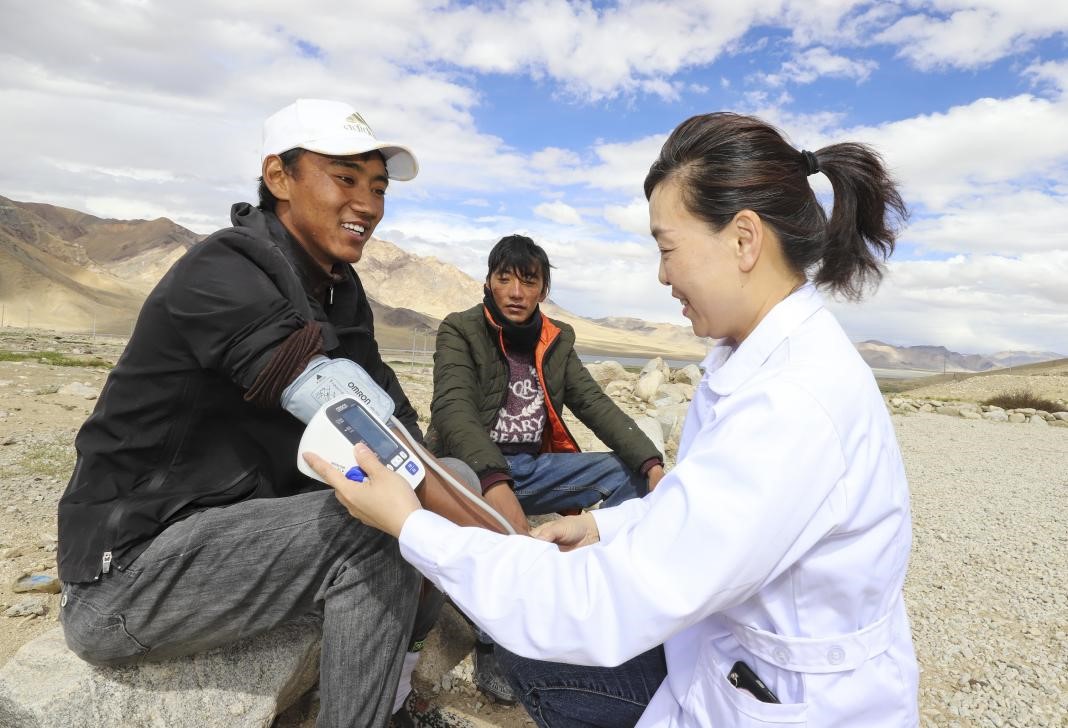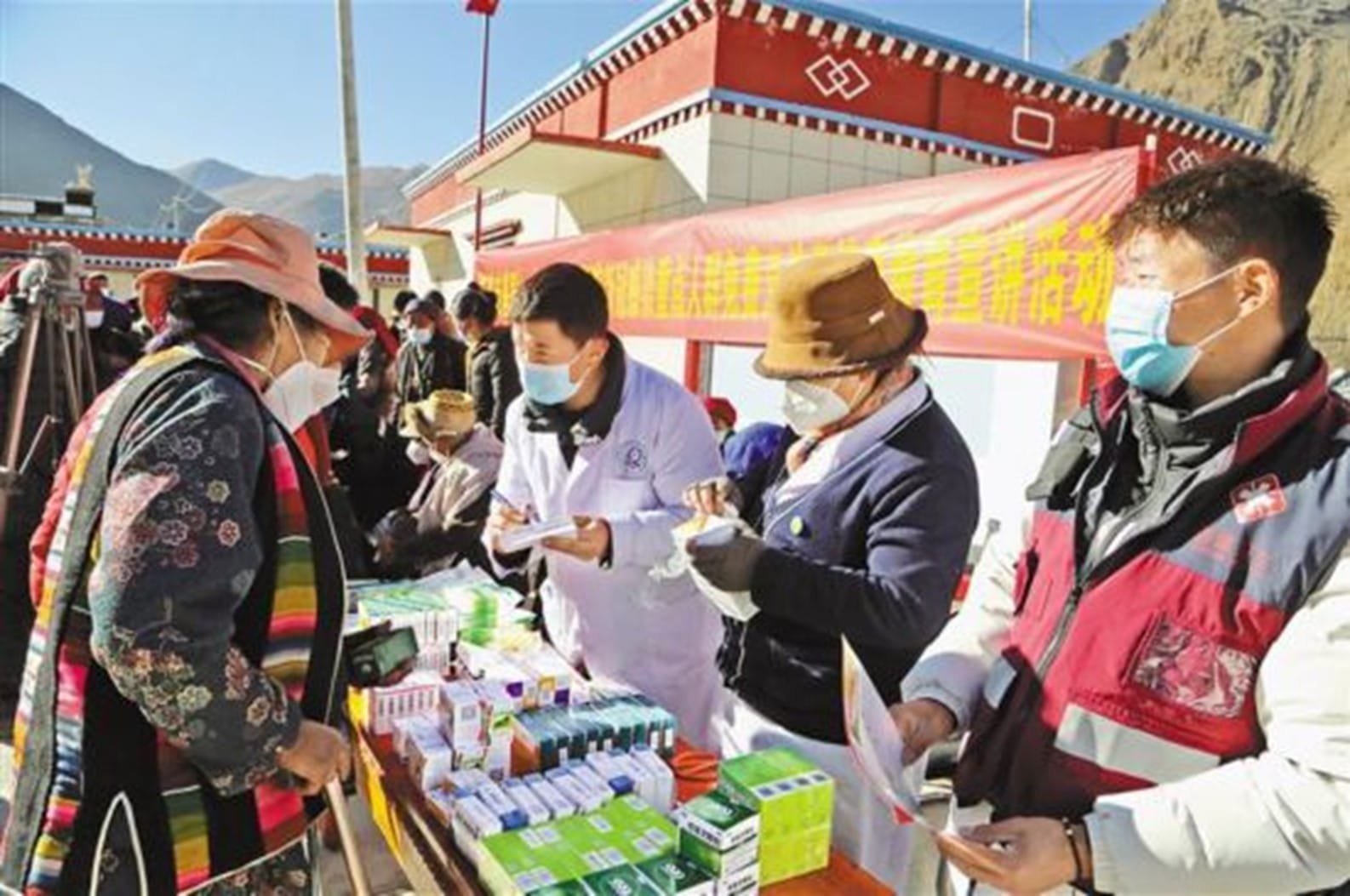[ad_1]
“Both fetal heart monitoring and B-scan ultrasonography showed that the baby is healthy,” said Tsering Yangzom, a 27-year-old mother-to-be who was receiving pregnancy care in a township clinic in Yulmed, Luntse county, Shannan, southwest China’s Tibet autonomous region.
According to the woman, she had to go to Luntse or downtown Shannan for pregnancy care, but now it has become much more convenient as relevant services are available where she lives.
The township clinic is a two-storey building that comes with a clinical lab, an internal medicine department and a preventive medicine department. Commonly used drugs are readily available there. It is staffed by seven medical workers, including general practitioners and nurses.
In the hall of the clinic, there is an intelligent health check-up machine. Patients can go through regular check-ups by simply tapping their ID cards on it. Then the machine would print health reports for patients automatically.
Qiu Jianliang, head of the clinic, has been working there for 10 years.

Doctors of a hospital in Qonggyai county, Shannan, southwest China’s Tibet autonomous region send free drugs to residents. (Photo from Tibet Daily)
“It is very difficult to find the exact cause of a person’s chest pain in the past. Now we have electrocardiograph machines which could help doctors with diagnosis and quickly detect heart problems,” said Qiu.
According to him, the clinic also offers B-scan ultrasonography, regular blood testing and urinalysis. The automated external defibrillator (AED) and other auxiliary medical devices could monitor, assess and automatically treat patients with life-threatening heart rhythms.
Thanks to the improved health and transport facilities, residents in Yulmed township can have minor illnesses treated locally, and those critically ill can also be diagnosed and transferred to better hospitals very quickly.
Qiu told People’s Daily that the township’s roads to the outside were closed for around six months each year in the past due to severe weathers and poor infrastructure, which was challenging for treating critically ill patients.

A congenital heart disease screening activity is held for local children in Saga county, Shigatse, southwest China’s Tibet autonomous region.. (Photo from Tibet.cn)
“Nowadays, we can send them to county and city hospitals with ambulances at the earliest time possible,” Qiu said.
Tobgye is a 56-year-old resident suffering from severe arthritis in Yulmed township. Last year, he had a surgery in Lhasa, capital of Tibet autonomous region, which greatly relieved his pain. He always visits the township clinic to fetch drugs.
“I had 85 percent of the surgery expense reimbursed, and the drugs I take now are mostly covered by my health insurance,” Tobgye told People’s Daily.
The improvement of medical conditions in Yulmed township is a miniature of the development of township clinics in Tibet autonomous region.
Today, an urban-rural medical service network that covers all levels has been established in the autonomous region, and the autonomous region’s basic healthcare, disease prevention and control, maternity and child health and mobile healthcare systems are also improving.

A doctor provides free clinic to local residents in Tashigang, a township with an altitude of 4,300 meters in Gar county, Ngari prefecture, southwest China’s Tibet autonomous region. (Photo by Liu Xiaodong/People’s Daily Online)
Now, every township clinic in Tibet is equipped with 3.4 practitioners on average, and all administrative villages in the autonomous region have at least one clinic.
Kelsang Yudron, head of Tibet’s health commission, said that Tibet is working to stabilize and optimize rural medical staff, build capable medical teams that meet villagers’ demands, and comprehensively improve the primary-level healthcare capabilities of the autonomous region, so as to provide residents with safe, effective, convenient and affordable basic health services and ensure equalized access to basic public health services.
Next, Tibet will focus on deepening reform of medicine and healthcare system, make the distribution of quality medical resources more balanced, improve the capability of primary-level medical services, optimize public health services and ensure medical services for key groups including seniors, children and women, Kelsang Yudron noted.
Besides, the autonomous region will keep promoting the inheritance and innovative development of traditional Tibetan medicine, build stronger medical teams and advance high-quality development of the health sector, Kelsang Yudron added.
(Web editor: Cai Hairuo, Liu Ning)
[ad_2]
Source link



